A block diagram of computers represents the structure of a computer and tells about its architecture in depth. It covers all from the inputting process to the retrieving of outcomes, and there are three major components in a computer system: the input unit, the central processing unit, and the output unit. The block diagram of the computer revolves around these three units.
Technology has developed enough to be part of our daily life, and we cannot hold it back. Whether you play audio or you want to manufacture an aircraft, the computer is always there to help you out in every situation. But, how does a computer work? It is a question everyone needs to know the answer to. So, through this article, I’ll try to explain all about a computer’s functionality and processing procedures.
Discussion Topics:
Components of a Computer System with Images
The parts of a computer diagram are so easy to understand, and there are no such infinite things to count or memorize; all you need to do is review 4 to 5 leading components. And these components are the spine of any PC. Components of computer matter and those who come in topline are the honest workers. The block diagram of computers tells you the nitty-gritty of these all.
So, before we head to anything else, let’s take a sharp look at the first component of the block diagram of the computer system.
Input System of Computer
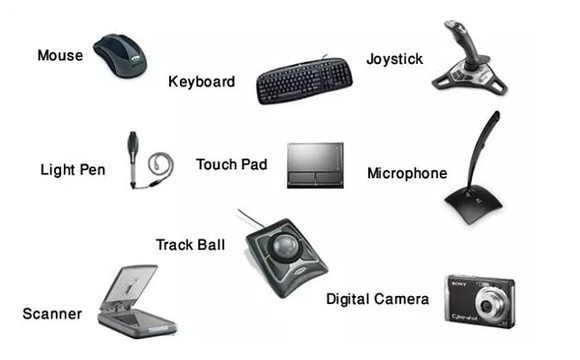
The input unit comes first, and it is the unit that manages all the data your computer receives. It has various categories to make it up for the input needs, such as keyboard, mouse, scanner, etc. These all components play the role of a bridge between the PC and the user. So, you take help from these devices to get the data in, and the PC receives all the data in binary form.
After receiving the data, the PC performs some functions and converts the raw data into useful information. CPU block diagrams begin with the input devices. You cannot even call the block diagram of computers complete until and unless it comes with a range of input device options.
Also Read: Can’t Hear Anyone on Discord? 8 Quick Solution
CPU-Central Processing Unit
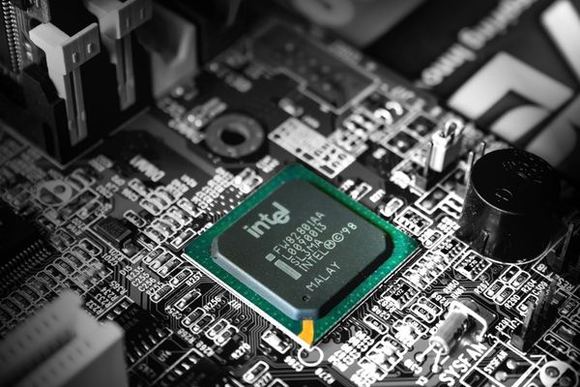
The central processing unit is the brain of a computer. The block diagram of a digital computer or any other PC cannot even think of losing this component. If you fully understand the block diagram of computers, I can ensure you’ll get to know the prestige of a CPU.
As I said, it is the brain of a computer as the brain of a human. The human brain controls all the body parts and processes the commands you need to perform, the same way the CPU does for a PC. Combining with a good motherboard, a processor makes a great CPU. It enables you to enjoy the performance.
If we dive into the details of the CPU, we find two primary units, the ALU and CU. To know these two functions, we’ll have to go down to the details.
Also Read: How to Update Motherboard Drivers? In Simple Steps
ALU-Arithmetic Logic Unit
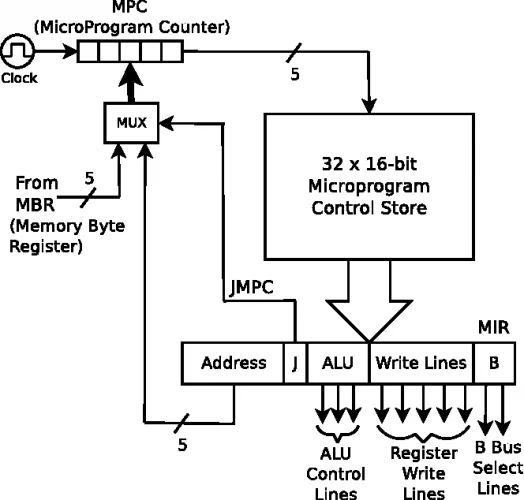
The arithmetic logic unit has two major sides that we can talk about. The first one is arithmetic, and the second one is logic. The arithmetic unit has to deal with processes related to subtraction, multiplication, division, and other figures dealings. So, when you enter the information through input devices, these units come to the front and apply all their relevant commands to proceed with the data.
After implementing the queries on the initial data, the ALU unit sends back the data to the storage. It also performs the functions of the logical approach with the data. Suppose the commands related to less than, equals to, greater than, etc. All these come under the head of the logical unit. If you look deep inside a computer diagram, you’ll find the ALU unit one of the most valuable tools.
If you understand the schematic diagram of the computer system and its features, no reason will prevent you from becoming a pro PC user. So, the drive motivated me to write this handiest block diagram of computers.
Also Read: How To Clean A Motherboard? 6 simple Steps
CU-Control Unit
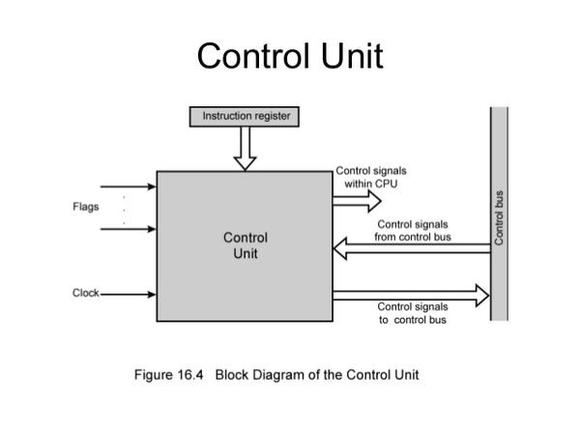
It is a great controller to get the data to process it and convert it into a valuable form for the user. The control unit comes in topline components of a diagram of a desktop computer. The memory unit stores the data once and sends it to the control unit for further actions, and when it receives the data, it applies the instructions to get the relevant results.
The Control unit makes the block diagram of computers competent with great value. It also helps you prioritize the activities and tasks. The central element plays the most crucial part between input and output devices. So, when you buy a PC, make sure it comes with a super great CPU with a powerful control unit.
MU-Memory Unit
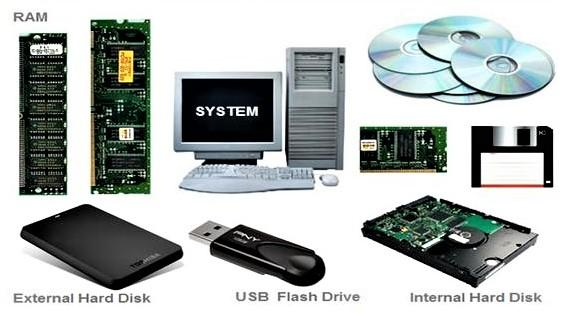
It is a hub of data-keeping. The data that you store or send to the control unit for further action keeps all that data inside it. It works with the CPU in sync. All the commands that you place to process the data, proceed with the commands by sending the relevant data to the destination you want.
The computer memory diagram comes with tremendous value, and it gives the best value to your usage. I hope now the block diagram of computer architecture will be very clear to you once you are done with the entire length of this article.
There are two types of memories: primary memory and secondary memory; the primary memory deals with a vast amount of data. It is not a permanent memory and stores the data until your system is on. If you have heard of RAM, random access memory is a type of primary memory.
On the other hand, secondary memory is the tool that allows you to have the data permanently. So, if you have heard of a hard disk that is an example of secondary memory. It saves your data until you delete it yourself. And it is not as easy to erase the data from the hard disk as with the RAM.
Output Setup of Computer
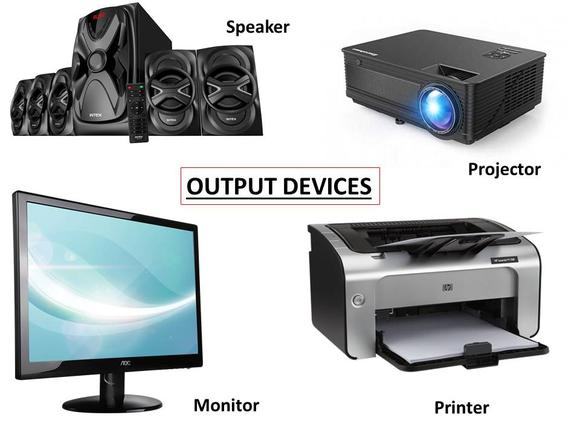
Last but not least is the output setup of a computer. The computer components diagram ends with various output devices such as a projector, monitor, printer, LEDs, etc. All these are the best examples of output devices. The data you enter inside of PC and process, you get back through these output devices.
Output devices come last in the block diagram of computers but are inevitable. I hope this computer hardware diagram I explained above will help you understand the PC well. These output devices help display the results. Whether you need it in soft or hard form, you can use the related device and get the desired results.
Let’s overview the details once again but in summarized form. The input devices allow you to send the data to the system storage. With the help of ALU and CU, the central processing unit processes the data to convert it into useful information. Once the data is processed, the memory unit stores it for further actions and future needs. And in the last, output devices help you see the desired outcomes either in soft or hard form. So, it is a how Block Diagram of computers complete
Pro Tips
What information does a block diagram provide?
The block diagram of a computer is a graphical representation of the architecture of a PC. It tells you the major components that help you process the data to convert it into final information. If I briefly explain the diagram of computer functions, it covers the processes from input to output. So, when you send the data to the systems and get it back in the form of information; all the parts that take part in this whole process are the essential components of a computer.
How many blocks does a computer have?
There are mainly 3 blocks in diagrams, and these three are the complete setup to process the data. The first one is about input, the second one is about CPU, which processes the data and employs the instructions on the data, and at the end, the output zone. You get multiple devices in the output block to get your outcomes either in soft or hard form.


2 Comments
Your article helped me a lot, is there any more related content? Thanks!
Thank you for your sharing. I am worried that I lack creative ideas. It is your article that makes me full of hope. Thank you. But, I have a question, can you help me?